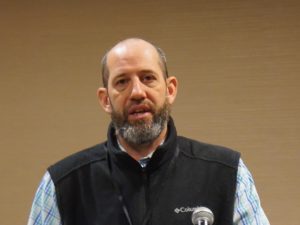
At the Bankers Day Conference on Dec. 16 in Lakeville, Minn., regulators got into the weeds about hemp lending in Minnesota.
Tony Cortilet, the noxious weed and cannabis program supervisor with the Minnesota Department of Agriculture, said there’s a lot of money in the hemp industry, but also a lot of risk. Cortilet also explained that producing CBD isn’t farmers’ only option.
The real challenge is harvesting hemp with a THC level (the psychoactive ingredient of the plant found in marijuana) that stays below 0.3 percent. Bankers should understand when financing hemp producers that the plant grows differently in Minnesota than in other parts of the country – specifically with CBD and other cannabinoids of the plant. That means that a seed that grows hemp with an acceptable THC level in Colorado might not have the same results in other states.
If the crop has a THC level higher than 0.3 percent, the entire acreage will be destroyed, no matter if a portion of the product is within the required percentage.
In the first two years after Minnesota passed the Industrial Hemp Development Act in 2015, which allowed the state to create a pilot program for industrial hemp following the federal provision of the Farm Bill in 2014, the failure of hemp plantations was around 40 percent. In the past year, there was only a 12 percent failure rate in Minnesota. So it’s improving, but Cortilet expects it to be about 10 years before the industry stabilizes, having a sound system and reliable plant breeding.
If you’re not licensed, if your fields aren’t monitored, and if your THC is too high, you’re technically growing marijuana in the eyes of the law, Cortilet said.
Grain and fiber varieties of hemp, however, have been around for decades, and those varieties have been properly certified under federal and international standards.
In fact, during World War II up until the prohibition in the ‘50s, “Minnesota was one of the leaders in the United States in terms of producing cannabis for fiber and rope and [other products] related to the war effort,” Cortilet said.
If farmers were only growing hemp for seed, grain and fiber production, “hemp would be a pretty safe place for them to operate,” Cortilet said.
